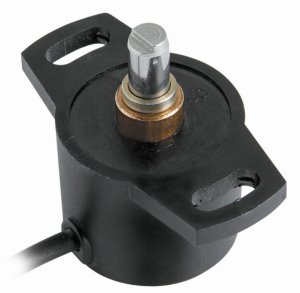Sensors harness Nobel prize-winning effect
The German sensor specialist, Novotechnik, has developed a range of non-contact, multi-turn angle sensors, based on a Nobel Prize winning technology. The sensors exploit the GMR (giant magnetoresistance) effect and are said to offer higher resolutions, better repeatability and longer lives than contact-based potentiometers, and much lower costs than absolute optical encoders.

The GMR effect was discovered by two scientists – Peter Grundberg and Albert Fert – in 1988. They found that materials made of thin, alternating layers of metallic and non-metallic elements displayed significant variations in resistance. The effect has since been exploited commercially by manufacturers of hard disk drives and in 2007, the two inventors won the Nobel Prize for physics for their discovery and subsequent work on the GMR phenomenon.
Novotechnik’s 28mm-diameter RSM 2800 sensors provide a 12-bit absolute position resolution over a selectable range of up to 15 turns (5,400 degrees). They offer a choice of voltage or current outputs. A 0.1-degree resolution digital version is also available. To provide an absolute position value over a multi-turn range, a 360-degree Hall Effect sensor is used with multiple spiral arms corresponding to each rotation. The position is available on start-up without needing calibration.
The sensors, available in the UK from Variohm Eurosensor, can provide low-cost absolute feedback for servo controls, or can be combined with the winding drum of a cable extension transducer to provide a compact long-travel linear position measurement system.

